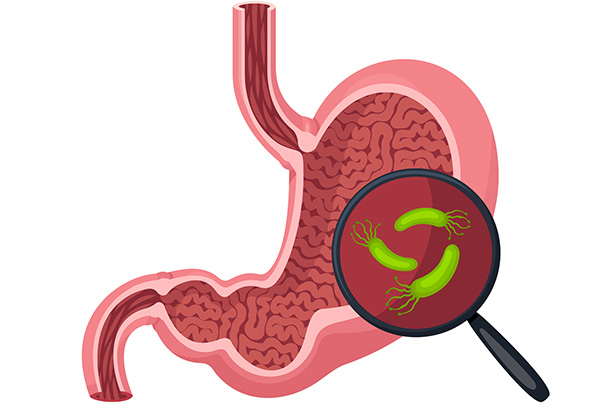
A synthetic material recently developed by Penn State scientists could lower the difficulty and barrier to entry for researchers studying how microorganisms interact with the gastrointestinal system and potentially improve labs' ability to screen drugs that impact gut health. Credit: AlonzoDesign/Getty Images. All Rights Reserved.
Synthetic material could improve ease and cut cost of gut microbiome research
March 27, 2024
Editor’s note: A version of this article originally appeared on Penn State News.
By Keith Hickey
UNIVERSITY PARK, Pa. — A team of Penn State researchers has developed a new synthetic material that could enable scientists to more easily study how microorganisms interact with the gastrointestinal (GI) system. The material might eventually provide a cheaper, more accessible way for researchers to screen drugs that impact gut infections, metabolic disorders like obesity and diabetes, and inflammatory bowel disorders.
The lining of the gastrointestinal system contains a protective layer of mucus. Traditionally, most studies of interactions between the bacteria in the gut microbiome and this mucus layer employ engineered mouse models, an expensive option for researchers and one that many find technically unattainable.
To tackle this cost and accessibility problem, researchers demonstrated an artificial version of this lining, called fluorine-assisted mucus surrogates (FAMS) in a paper published earlier this month in Advanced Functional Materials. They created FAMS, for which they have filed a provisional patent application, using inexpensive and easily obtained ingredients that are appropriate for laboratory studies.
Scott Medina, the William and Wendy Korb Early Career Associate Professor of Biomedical Engineering, and bioengineering graduate student Michael Miller, a member of Medina’s lab, developed FAMS. The process involves directing amino acids — the building blocks of proteins — to assemble at phase-separated liquid interfaces, the boundaries where two insoluble liquids meet. Once assembled, researchers can create fibers that entangle with each other and form a viscous, gel-like material that can stand in for gastrointestinal mucus.
“FAMS are made with relatively cheap and commercially available materials, and can be generated using standard laboratory hardware,” Medina said. “As a result, the material can be broadly adopted into a variety of laboratory settings to advance microbiome research and drug discovery, while simultaneously potentially reducing the need for animal models.”
Eventually, there may be further improvements on FAMS. Miller and Medina are collaborating with Ibrahim Ozbolat, professor of engineering science and mechanics, to explore the potential for customizable, 3D-printed gut tissues that can replicate the architecture of the GI tract.
“This technology offers a harm-free opportunity to more broadly study the effects of drugs, probiotics, or even diseases on the gut microbiome,” Miller said. “Long term, we hope the improvements to research workflow that FAMS provide can help discover new treatments for chronic GI diseases and disorders.”
The U.S. National Science Foundation and the National Institutes of Health funded this research.



